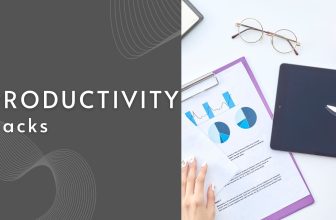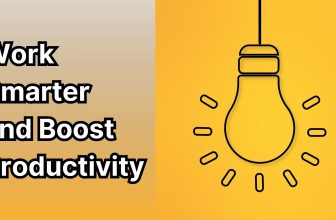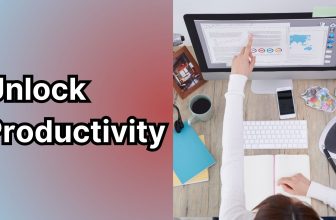In today’s fast-paced world, effective time management has become a necessity rather than a luxury. With a constant stream of tasks, projects, and responsibilities, it’s easy to feel overwhelmed and struggle to maintain a healthy work-life balance.
In my experience as an entrepreneur for over a decade, this is where time management frameworks prove invaluable. These structured systems are designed to help you prioritize tasks, boost productivity, and make the most of your day. Whether you’re a business professional, a student, or simply someone aiming to optimize your daily routine, adopting the right time management framework can transform how you manage your time.
From the Eisenhower Matrix and the Pomodoro Technique to Time Blocking and the Getting Things Done (GTD) method, there are numerous systems available to help you streamline your work, focus on urgent tasks, and achieve a better balance between your professional and personal life.
1. Understanding Different Time Management Frameworks
Eisenhower Matrix: Prioritizing Tasks for Maximum Efficiency
The Eisenhower Matrix is a powerful tool for prioritizing tasks based on their urgency and importance. This matrix is divided into four quadrants, each serving a distinct purpose:
- Quadrant 1: Tasks that are both urgent and important, such as crises or deadlines requiring immediate attention.
- Quadrant 2: Tasks that are important but not urgent, like long-term goals or personal development activities, which should be scheduled for later.
- Quadrant 3: Tasks that are urgent but not important, which can be delegated to others.
- Quadrant 4: Tasks that are neither urgent nor important, and should be eliminated or minimized to avoid distractions.
Pomodoro Technique: Enhancing Focus with Structured Breaks
The Pomodoro Technique is a time management method designed to enhance productivity through short, focused intervals of work, called “Pomodoros” (typically 25 minutes), followed by short breaks. This technique helps maintain concentration and reduce burnout. After completing four Pomodoros, you take a longer break of about 15-30 minutes.
This structured approach to work and breaks can significantly improve focus and overall efficiency. It is particularly useful for tasks requiring intense mental effort and can be combined with other frameworks, such as the Eisenhower Matrix, to prioritize and manage tasks effectively.
Time Blocking: Organizing Your Day with Purpose
Time Blocking is a time management framework that involves scheduling your day into fixed, uninterrupted blocks of time dedicated to specific tasks. This method helps organize your day with purpose and ensures that sufficient time is allocated for each task.
By blocking out time for urgent and important tasks, as well as breaks and leisure activities, you can create a balanced and productive schedule. Time Blocking can be used alongside other techniques, such as the Eisenhower Matrix, to prioritize and manage tasks efficiently. It also helps avoid multitasking and minimize distractions, leading to increased productivity and better work-life balance.
2. Implementing Time Management Frameworks in Your Routine
Integrating the Eisenhower Matrix
To effectively integrate the Eisenhower Matrix into your daily routine, start by conducting a thorough brain dump of all your tasks. Write down every task, no matter how small or large, to ensure you capture everything that needs attention. Then, categorize these tasks into the four quadrants of the matrix:
- Urgent and important
- Important but not urgent
- Urgent but not important
- Neither urgent nor important
Once your tasks are categorized, prioritize them within each quadrant:
- Quadrant 1 (urgent and important): Tackle these tasks immediately.
- Quadrant 2 (important but not urgent): Schedule these tasks for later, using time management techniques like the Pareto principle or the Pomodoro Technique to ensure they are completed efficiently.
- Quadrant 3 (urgent but not important): Delegate these tasks to others when possible. This helps manage your workload and gives your team members opportunities to develop new skills.
- Quadrant 4 (neither urgent nor important): Eliminate or minimize these tasks to avoid distractions and maintain focus on more critical tasks.
Making the Most of the Pomodoro Technique
Implementing the Pomodoro Technique involves breaking down your work into focused, 25-minute intervals (Pomodoros) separated by short breaks. Here’s how you can make the most of this technique:
- Start with a Clear Goal: Before beginning a Pomodoro session, define what you want to achieve during that interval. This helps maintain focus and ensures you are working towards a specific goal.
- Minimize Distractions: During each Pomodoro, eliminate or minimize distractions such as turning off notifications, finding a quiet workspace, or using tools that block non-essential websites.
- Use Breaks Effectively: The breaks between Pomodoros are essential for maintaining productivity. Use this time to stretch, move around, or do something relaxing to recharge.
- Combine with Other Techniques: You can integrate the Pomodoro Technique with other frameworks like the Eisenhower Matrix. For example, use Pomodoros to tackle tasks in Quadrant 1 or schedule Pomodoro sessions for tasks in Quadrant 2.
Effective Strategies for Time Blocking
Time Blocking is a powerful method for organizing your day, and here are some strategies to make it highly effective:
- Schedule Tasks in Advance: Plan out your day the night before or first thing in the morning. Allocate specific time blocks for each task, ensuring you have enough time for both urgent and important tasks.
- Be Realistic: Make sure the time blocks are realistic and take into account the actual time required for each task. Avoid overloading your schedule, as this can lead to burnout and decreased productivity.
- Leave Buffer Time: Include buffer times between tasks to account for unexpected interruptions or transitions. This helps maintain a smooth flow throughout the day.
- Review and Adjust: Regularly review your time-blocking schedule and adjust it as necessary. Life is dynamic, and your schedule should reflect changes in your priorities and commitments.
By incorporating these strategies into your routine, you can leverage time management frameworks to enhance your productivity, reduce stress, and achieve a better balance between your work and personal life.
3. Benefits and Challenges of Adopting Time Management Frameworks
Increased Productivity and Reduced Stress
Adopting time management frameworks can have a profound impact on both your productivity and overall well-being. One of the primary benefits is the significant increase in productivity. By using frameworks like the Eisenhower Matrix, Pomodoro Technique, or Time Blocking, you can prioritize tasks more effectively, focus on what truly matters, and manage your time in a way that maximizes output. This structured approach helps in avoiding the chaos of last-minute tasks and overwhelming workloads, leading to higher job satisfaction and better overall productivity.
Another benefit is the reduction in stress levels. Effective time management training has been shown to improve employees’ perception of their time management skills, resulting in lower stress and enhanced well-being. When you have a clear structure for managing your time, you feel more in control and better equipped to handle the demands of your work and personal life. This sense of control over one’s time is particularly important for maintaining mental health and reducing the feeling of being overwhelmed.
Navigating Common Obstacles
While time management frameworks offer numerous benefits, there are also common obstacles to navigate when implementing them:
- Resistance to Change: One of the biggest challenges is the initial resistance to changing your existing habits and routines. It can be difficult to adapt to new systems, especially if you are accustomed to a more flexible or spontaneous approach to time management. To overcome this, start with small changes and gradually integrate the new framework into your daily routine.
- Overcommitting: Another common issue is overcommitting yourself by trying to fit too many tasks into your schedule. This can lead to burnout and decreased productivity. Be realistic when allocating time blocks, and ensure you leave some buffer time for unexpected interruptions or tasks that take longer than anticipated.
- Distractions and Procrastination: Minimizing distractions and avoiding procrastination are key to the success of any time management framework. Use tools like website blockers or find a quiet workspace to help you stay focused. Additionally, breaking down large tasks into smaller, manageable chunks can help prevent procrastination and keep you on track.
- Consistency and Flexibility: Consistency is important when adopting a time management framework. However, it’s also important to remain flexible. Life is unpredictable, and your schedule should be able to adapt to changes. Regularly review and adjust your time management plan to ensure it remains effective and aligned with your evolving needs.
By understanding and addressing these challenges, you can more effectively implement time management frameworks and reap their full benefits, leading to a more productive, less stressful, and more balanced life.
Conclusion: Making Time Management Work for You
In conclusion, effective time management is the cornerstone of productivity, stress reduction, and achieving a healthy work-life balance. By understanding and implementing frameworks like the Eisenhower Matrix, Pomodoro Technique, and Time Blocking, you can significantly enhance your ability to prioritize tasks, focus on what matters, and manage your time efficiently.
Remember to integrate these techniques into your daily routine gradually, adapting them to your specific needs. Be mindful of common obstacles such as distractions and overcommitting, and maintain flexibility in your scheduling. With consistent practice and the right tools, you can master time management, increase your productivity, and enjoy a more balanced and fulfilling life.
Read Next
5 Tips for Better Time Management in 2025

10 Ways to Improve Yourself as a Man Every Day

7 Reasons to Embrace Failure for a Stronger You








